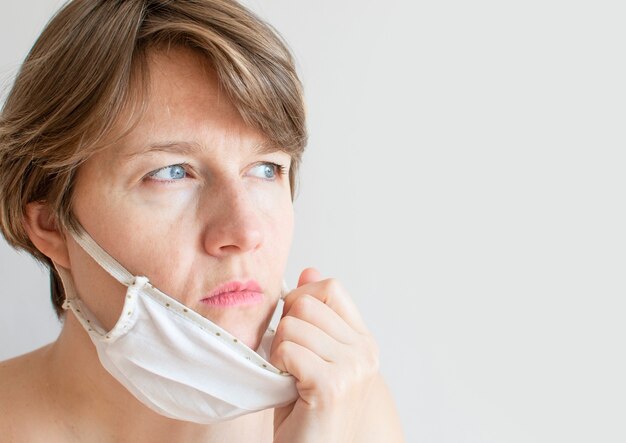Understanding Facial Rosacea: Key Insights and Management Strategies
Facial rosacea is a common skin condition that affects millions of people worldwide. Although not life-threatening, this chronic condition can impact one’s self-esteem and quality of life. If you're noticing persistent redness, visible blood vessels, or even acne-like breakouts on your face, you could be dealing with rosacea. Let’s delve into what it is, how to recognize it, and what you can do about it.
What is Rosacea?
Rosacea is a chronic inflammatory skin disorder that primarily affects the face. It often begins with a tendency to blush or flush more easily than other people. Redness can eventually spread beyond the cheeks to the nose, chin, and forehead. In more advanced stages, blood vessels may become visible, and you might notice small pink or red bumps that often resemble acne. However, unlike acne, these bumps are not due to clogged pores.
Recognizing the Symptoms
- Persistent redness: This is the most common sign of rosacea.
- Visible blood vessels: Known as telangiectasia, these appear on the skin surface.
- Bumps and pimples: These can resemble acne but are more likely to cause burning and stinging.
- Eye irritation: Rosacea can affect the eyes, causing irritation, dryness, and swelling, a condition known as ocular rosacea.
- Thickened skin: In rare cases, especially in men, the skin around the nose can become thick and bulbous, a condition known as rhinophyma.
What Causes Rosacea?
The exact cause of rosacea is not fully understood, but several factors may contribute to its development:
- Genetics: Rosacea tends to run in families, which suggests a genetic component.
- Immune System: A malfunction in the immune system may play a role. The body might overreact to certain stimuli, leading to inflammation.
- Environmental Triggers: Sun exposure, extreme temperatures, and wind can exacerbate rosacea.
- Microbial Factors: Certain bacteria and skin mites living on facial skin may contribute to symptoms.
- Blood Vessel Abnormalities: Rosacea may be linked to issues with facial blood vessels.
Identifying Your Triggers
One of the most practical steps in managing rosacea is identifying and avoiding your personal triggers. These can vary widely but generally include:
- Dietary factors: Spicy foods, hot drinks, caffeine, and alcohol can trigger flare-ups.
- Emotional factors: Stress and anxiety are common triggers.
- Weather changes: Sunlight, heat, and cold are known to provoke symptoms.
- Skincare products: Harsh chemicals or fragrances in skincare products may lead to irritation.
Keeping a Trigger Diary
Consider keeping a diary to log your daily activities, diet, and rosacea symptoms. Over time, patterns may emerge, making it easier to identify and manage your triggers.
Living with Rosacea
While there is currently no cure for rosacea, various strategies can help manage and minimize its symptoms:
Skincare Management
- Gentle cleansers: Opt for mild, non-abrasive soaps or cleansers without alcohol or other irritating ingredients.
- Moisturization: Use a daily moisturizer that suits sensitive skin.
- Sunscreen: Apply a broad-spectrum sunscreen with at least SPF 30 to protect your skin from harmful UV rays.
Medical Treatments
- Topical Medications: Prescription creams or gels can reduce inflammation and visible blood vessels.
- Oral Medications: Antibiotics may be prescribed for more severe symptoms.
- Laser Therapy: This can address visible blood vessels and reduce redness.
Lifestyle Adjustments
- Dietary changes: Avoid known dietary triggers.
- Stress Management: Practice relaxation techniques like yoga or meditation.
- Protective Clothing: Wear a wide-brimmed hat and protective clothing when outdoors.
Engaging with a Dermatologist
Consulting with a dermatologist can be invaluable if you suspect you have rosacea. They can provide a diagnosis and develop a treatment plan tailored to your needs. Remember, managing rosacea is a personal journey, and what works for one person may not work for another.
Empowering Yourself with Knowledge
- Learn more about rosacea through trustworthy sources and communities.
- Join support groups. Whether online or in-person, connecting with others who have rosacea can provide emotional support and practical tips.
Debunking Common Myths
There are many misconceptions about rosacea. Let’s address a few of these myths to set the record straight:
- Myth: Rosacea is just adult acne. While both conditions can have similar symptoms, they are unrelated and require different treatments.
- Myth: Rosacea is caused by poor hygiene. The disorder is not related to cleanliness but rather involves other factors like genetics or the immune system.
- Myth: Only fair-skinned people get rosacea. Although more common in fair-skinned individuals, rosacea can affect any skin color.
Final Insights
Living with rosacea can be challenging, but it doesn’t have to define you. With the right tools, knowledge, and support, you can lead a comfortable life. Understanding your condition, recognizing triggers, and embracing effective management strategies can significantly enhance your quality of life.
Whether you’re newly diagnosed or have been managing rosacea for some time, stay informed and proactive about your health. Empowerment through education is your greatest ally in managing this condition.
📌 Quick Summary & Tips for Managing Rosacea:
- Identify and avoid triggers 🌞🍫: Keep a diary of potential triggers like sun exposure, spicy foods, and stress.
- Adopt a gentle skincare routine 🧴: Use non-irritating cleansers and moisturizers, and apply sunscreen daily.
- Consult a dermatologist 👩⚕️: Seek professional advice for diagnosis and treatment options.
- Consider medical and lifestyle interventions 🎯: Explore treatments from topical creams to dietary changes.
- Stay informed and connected 🌐: Join support groups and seek reliable information to navigate rosacea effectively.
